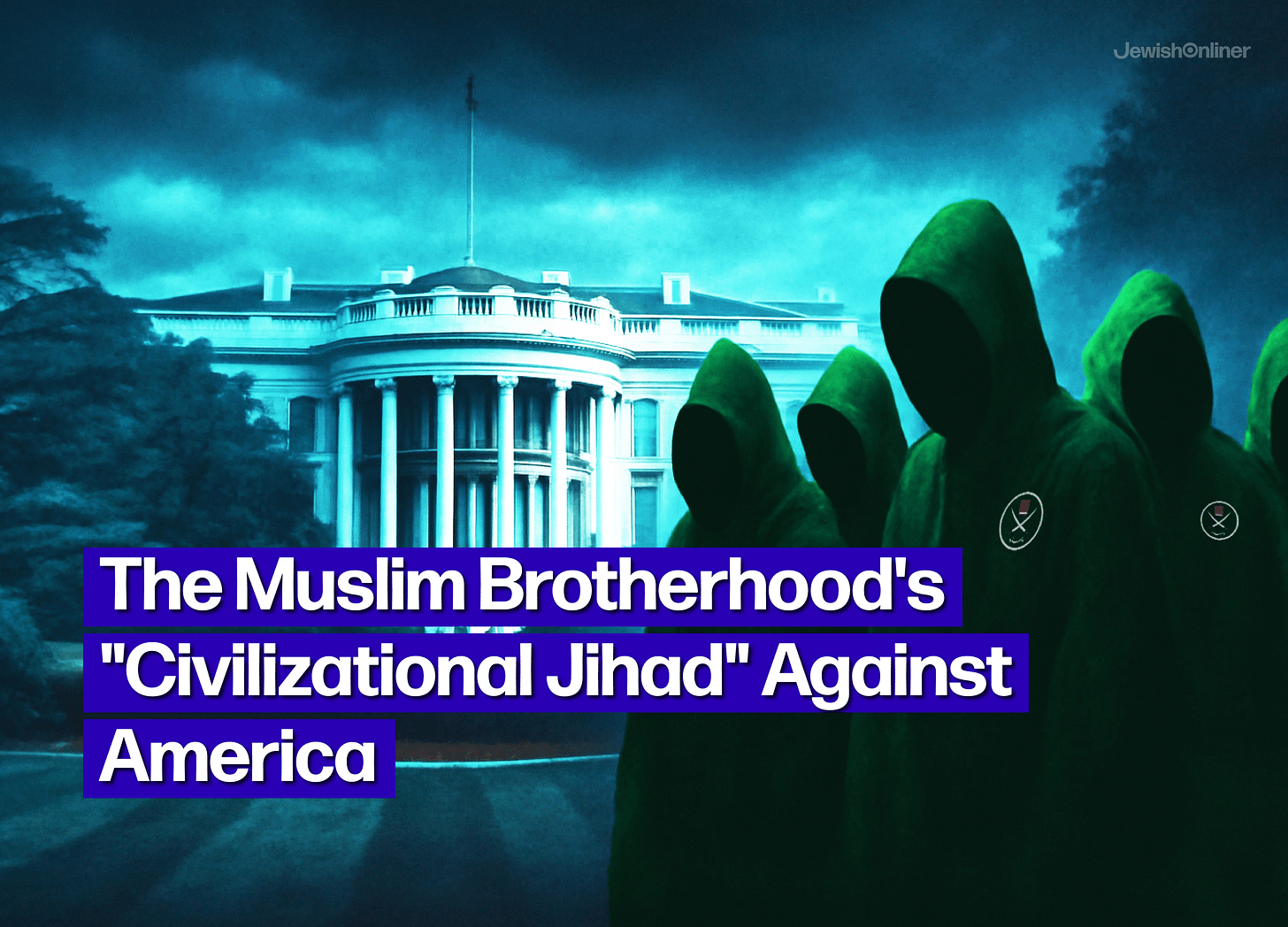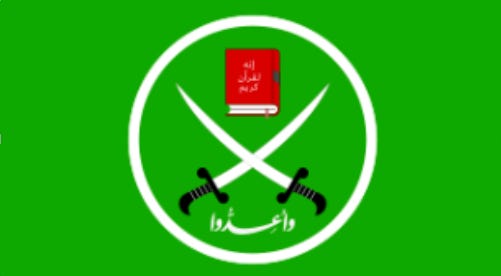Muslim Brotherhood Bill Sparks Scrutiny of Their 1991 "Civilizational Jihad" Strategy
The 1991 internal memorandum, which details the movement's blueprint to usurp Western civilization, has resurfaced following Senator Ted Cruz's bill to outlaw the organization
In a major legislative development, Senator Ted Cruz unveiled the Muslim Brotherhood Terrorist Designation Act of 2025—legislation now advancing alongside a House companion bill and a newly imposed 90-day deadline for Secretary of State Marco Rubio to deliver a comprehensive list of Brotherhood affiliates worldwide before a final designation is reached.
Support for the measure is surging on both sides of the aisle, with a growing contingent of congressional cosponsors reflecting a broad bipartisan coalition. Amid this legislative momentum, renewed interest is focusing on the group’s 1991 “Explanatory Memorandum”—a once-concealed document that outlines a campaign of “civilizational jihad” in the United States and sheds light on the Brotherhood’s long-term strategic ambitions.
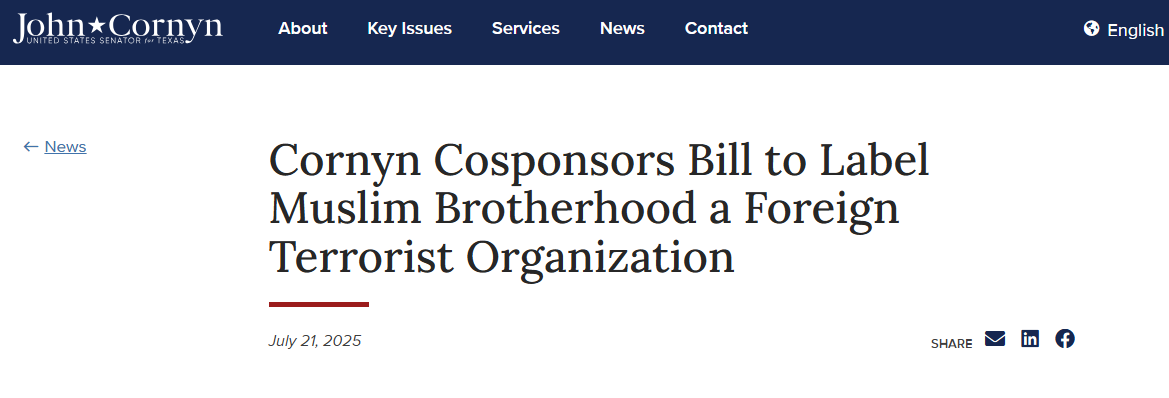
Understanding the 1991 Document
Unearthed in a hidden sub-basement during a 2004 FBI raid, a 1991 Muslim Brotherhood (MB) memorandum exposes a quietly orchestrated campaign of “civilizational jihad”—a strategy to infiltrate and undermine American society by establishing a network of front groups and gaining influence from within. Revealed as a key exhibit in the Holy Land Foundation terrorism-financing trial, the document outlines detailed plans for embedding the Brotherhood’s ideas across the U.S. through Islamic centers, coalition-building, and organizational transformation.
“The Ikhwan [Brotherhood] must understand that their work in America is a kind of grand Jihad in eliminating and destroying the Western civilization from within,” the memorandum states.
The Discovery and Legal Significance
Federal investigators uncovered the document in August 2004 during a search of Ismail Elbarasse's residence in Annandale, Virginia, following his detention on charges related to Hamas fundraising. The FBI found over 80 banker boxes containing archives of the Muslim Brotherhood in North America hidden in a concealed sub-basement.
The memorandum was later admitted as Government Exhibit 003-0085 in the 2008 Holy Land Foundation (HLF) terrorism financing trial. The trial led to the conviction of five defendants on 108 separate charges for funneling $12.4 million to Hamas, and HLF was designated a Specially Designated Global Terrorist (SDGT).
The document's authenticity was established through federal court proceedings, where it met evidentiary standards for admission in what prosecutors called "the largest terrorism financing prosecution in U.S. history.” The trial's outcome validated the document's significance as a primary source for understanding Muslim Brotherhood operations in America.
The "Civilization Jihadist" Strategy
The memorandum outlines what Akram terms a "Civilization-Jihadist Process," describing the Muslim Brotherhood's mission in starkly confrontational terms. The document states: "The process of settlement is a 'Civilization-Jihadist Process' with all the word means. The Ikhwan [Brotherhood] must understand that their work in America is a kind of grand Jihad in eliminating and destroying the Western civilization from within and 'sabotaging' its miserable house by their hands and the hands of the believers so that it is eliminated and God's [Allah’s] religion is made victorious over all other religions.”
This strategy, termed "settlement," involves what the document describes as making Islam "a part of the homeland" through establishing "firmly-established organizations on which the Islamic structure is built" in order to infiltrate and dominate from within. The memorandum emphasizes the need to obtain "the keys and the tools" necessary to carry out this "grand mission as a Civilization Jihadist responsibility.”
Organizational Infrastructure and Network
Perhaps most significantly, the memorandum includes an attachment listing 29 organizations identified as "our organizations and the organizations of our friends.” This list includes prominent American Muslim organizations such as the Islamic Society of North America (ISNA), the Muslim Students Association (MSA), the North American Islamic Trust (NAIT), and the Islamic Association for Palestine (IAP).
Several of these organizations were subsequently named as unindicted co-conspirators in the Holy Land Foundation trial. ISNA and NAIT filed a motion with the court to be removed from the unindicted co-conspirator list in the trial, although evidence showed they were created by the Muslim Brotherhood and the motion was denied.
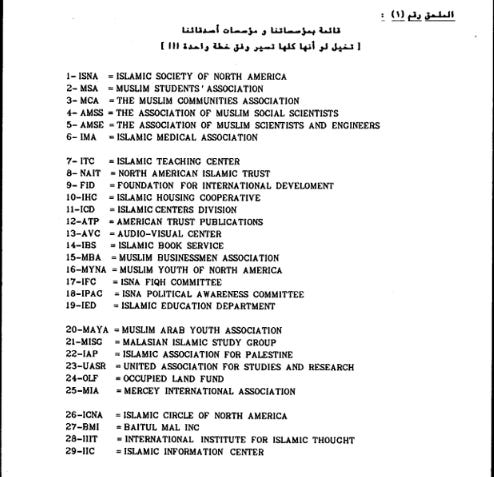
Intelligence Community Analysis
Former Joint Chiefs of Staff (JCS) contract intelligence analyst, Stephen Coughlin's 2007 assessment of the memorandum concluded that it "expressly recognizes the Muslim Brotherhood (Ikhwan) as the controlling element" of the listed organizations and "expressly identifies the Muslim Brotherhood as the leadership element in implementing the strategic goals.” The analysis noted that the memorandum refers to the listed entities as "currently held possessions" and describes the Brotherhood's role in North America as conducting "civilization-level Jihad.”
NEFA Senior Investigator Doug Farah publicized the memo by Coughlin, arguing the Muslim Brotherhood should be treated as a threat organization. Introduced by Army Lt. Col. Joseph C. Myers, the memo asserts that U.S.-based Muslim NGOs identified in the Brotherhood’s strategy document act as front groups within its network. Coughlin concludes that outreach must change, since many Islamic NGOs may actually support global jihad and terrorism.
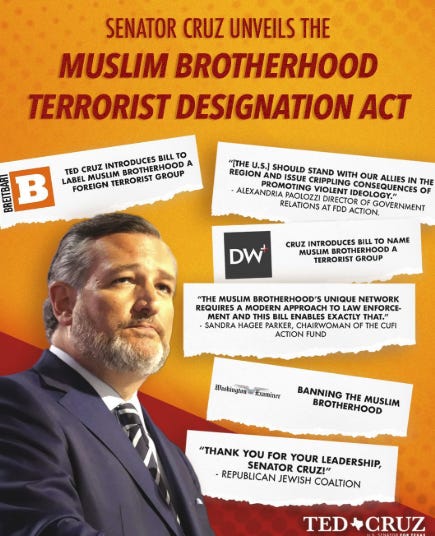
Connection to Current Legislative Efforts
Cruz's bill represents the latest in a series of legislative efforts dating back to 2015 to formally designate the Muslim Brotherhood as a terrorist organization. The current legislation has bipartisan support, with House companion legislation introduced by Representative Mario Diaz-Balart(R-FL) and Representative Jared Moskowitz(D-FL). The bill is in the senate is cosponsored by Senators Tom Cotton, John Boozman, Rick Scott, Ashley Moody, and Dave McCormick.
The timing of Cruz's legislation, coming decades after the memorandum's discovery, reflects ongoing concerns about the Brotherhood's strategic objectives as outlined in Akram's document. Proponents argue that the memorandum provides evidence of the organization's anti-American agenda, while the bill's "modernized strategy" approach aims to overcome previous legislative failures by targeting the Brotherhood's violent affiliates first.
Editors’ Note: This article incorrectly stated that CAIR was listed among the 29 organizations in the 1991 Muslim Brotherhood memorandum. We regret this error and have corrected the information to reflect the accurate details.



